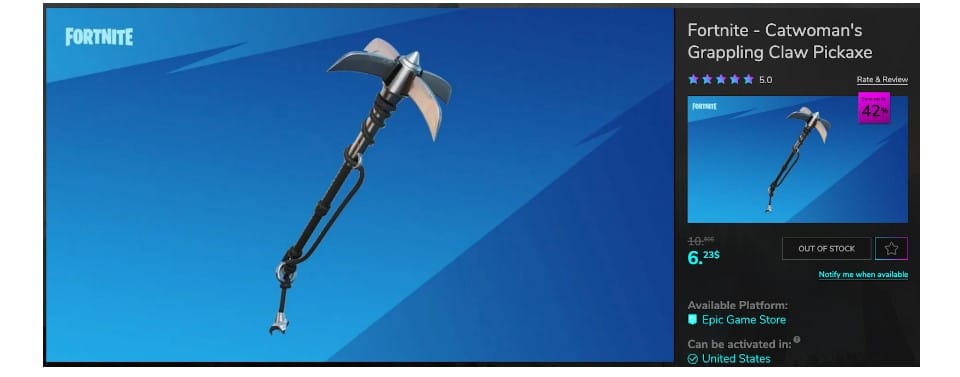All the big brands in the world have one thing in common: They’re easily recognizable— be it through their logos, colors, taglines, or any other branding attributes.
And this brand recognition is their greatest strength—it’s what separates them from the crowd, and it’s what helps them make a direct connection with customers.
But brand recognition as a concept isn’t only reserved for the high and mighty brands of the world. In fact, you can take active steps today to help your brand get recognized, too.
On that note, in this guide, we’re discussing what brand recognition means, why it’s important, and what are some of the best practices to consider to make your brand get “recognized.”
Understanding brand recognition
Before we put forward a definition of any sort, let’s amuse ourselves with a thought experiment.
Tell us which name pops up in your mind when you look at this logo:

What about this logo— does it ring any bells?

What about the tagline “Belong Anywhere.” Did it remind you of any brand?
If your answers were LinkedIn and Honda, you’re:
- Right on the mark, and you
- Have first-hand witnessed the impact brand recognition can have
As a concept, brand recognition relies on making your brand so popular and familiar that customers can recognize you purely by things on the surface, such as your:
- Packaging
- Logos
- Brand colors (among other things usually found in your style and design guide)
To run any successful brand recognition campaign, you must first invest heavily in marketing to ensure customers can easily recall your brand name.
A good example of a company leveraging brand recognition effectively is Cruise America, a well-known provider of used RVs in the United States. Despite operating in a competitive market, Cruise America has established a distinct brand identity that resonates with consumers.

For instance, the company’s RVs with distinctive branding are easily recognizable on the roads, creating a lasting impression in the minds of potential customers. This strong visual association with the brand can influence consumers’ perceptions and increase the likelihood of considering Cruise America when searching for used RVs.
Brand awareness vs. brand recognition
Brand recognition and brand awareness are often considered to be interchangeable terms, but there are distinct differences between the two.
Brand awareness means your customers are simply aware that your brand exists. For example, you may know that a new restaurant named “XYZ” has opened in your area.
Brand recognition, on the other hand, occurs when your audience is able to identify your brand anytime they see/hear your branding elements (i.e., logo, slogans, jingles, packaging, etc).
For example, if someone showed you the Lindt logo, you’d immediately think of:
- Higher price point (due to the luxurious experience they provide)
- Smooth and velvety chocolate
- The iconic Lindor balls
Another way to think about brand recognition is by considering an ice cream truck—-anytime kids hear the jingle of an ice cream truck, they know they’re in for a treat.
The same can’t be said for brand awareness, as simply knowing an ice cream truck exists doesn’t elicit the same immediate and specific recognition and emotional response as hearing the jingle associated with it.
Why brand recognition is important
Let’s dive into a comprehensive list of benefits (with real-life examples of how brands are leveraging these benefits).
Brand recognition fosters trust, loyalty, and a sense of security among clients
For a company like Aurit Mediation, which specializes in divorce mediation in Arizona, strong brand recognition is essential as clients dealing with sensitive issues need to feel assured that they are in capable and trustworthy hands.
Aurit Mediation has created a safe and supportive environment for its clients during challenging times. When individuals recognize and associate Aurit Mediation with reliability and empathy, they’re more likely to feel comfortable and secure in seeking their services.
This trust is built over time through consistent and positive client interactions, effective marketing, and a strong, recognizable presence in the community.

Ultimately, strong brand recognition means that when clients think of divorce services in Arizona, Aurit Mediation comes to mind first. This recognition translates into a perceived assurance of quality and care, making clients more likely to entrust their sensitive family matters to Aurit Mediation.
It also allows you to build an emotional connection with your customers and invoke feelings that ultimately lead to purchases
For example, we previously discussed the case of an ice cream truck, but also consider the memories you think about any time you see the logo of your favorite chocolate brand from your childhood.
Brand recognition also plays an important role in building brand reliability
For instance, Chime, an online bank offering products like checking accounts, relies heavily on strong brand recognition to assure clients of its reliability and safety.
In the digital banking space, where clients don’t interact with physical branches, the ability to recognize and trust a brand is key. Furthermore, in the online banking industry, where fraud and cyber threats are constant concerns, a well-recognized and trusted brand like this can alleviate fears and reassure clients.
Effective brand recognition communicates that this is a stable and dependable choice, which helps clients make safe financial decisions. Brand recognition in this context helps Chime:
- Stand out in a competitive market
- Attract new customers
- Retain existing ones by creating a sense of familiarity and reliability
It also leads to higher sales and loyalty
This is particularly evident in the gaming industry, where established franchises like Fortnite and Batman have immense brand recognition. For instance, Fortnite offers unique items like the “Catwoman Pickaxe,” drawing fans of both Fortnite and Batman and strengthening the connection to these well-known franchises.

This strategy showcases the power of established brands in building a dedicated customer base and increasing visibility in a competitive market. It’s so effective that this particular downloadable content is out of stock. Now, that’s impressive.
Customers who already know of your brand are more inclined to buy from you purely due to the brand recall factor associated with it.
For example, if you are considering buying a camera, brands like SONY will pop into your mind. Similarly, if you think of purchasing smartphones, your next thought might just be of Samsung’s.
Strong brand recognition also allows for more partnership and investment opportunities.

For example, there’s a reason why Uber partnered with Spotify over other music apps: Spotify has strong brand recognition (which, ergo, leads to more loyalty, trust, and brand recall).
What can you do to make your brand recognizable?
Here are a few actionable tips you can leverage to improve your brand’s recognition:
1. Invest in a style and design guide
A style and design guide, also known as a brand bible or a branding kit, is a document that illustrates all the need-to-know details about your packaging, marketing, and design.
These documents:
- Will have different variations of your logo you can use in different places;
- Clarify the colors you can use on which marketing materials (e.g., packaging vs. social media)
- Address your brand story, detail your brand tone and voice, and even provide examples and use cases.

2. Use the same faces in your marketing materials
Think of your favorite art shows from your childhood. More often than not, these art shows and channels used a couple of names and faces you were familiar with, and this was done for a specific reason — to invoke a feeling of familiarity with the brand with the help of faces.
In the adult world, companies invest in brand ambassadors. They also use the same faces in their marketing materials (e.g., Travis Tyler with PandaDoc or Rand Fishkin with SparkToro) to invoke the same reaction.

3. Show up at places where your customers are
For brand recall to do its trick, you need to first be present in all places where your customers can see you enough such that they can remember you.
This means creating a social presence for your brand, attending events and webinars, sponsoring their favorite games/conferences, showing up on their feed (through social channels like Reddit or communities like Slack), etc. Not only this, you need to create a full-fledged website to ensure your virtual presence.
4. Partner with influencers who can improve your brand’s visibility
Look out for influencers who have the same values as your brand, a steady engagement level, and a community they deeply care about (which also happens to have members from your target audience).
These influencers can improve your brand recognition efforts tenfold by leveraging their own goodwill, connection with the audience, and follower count. Think of it as your trusted friend providing you with a recommendation — often makes you trust the brand more, right?
5. Leverage social proof

Last but not least—social proof (like testimonials, ratings, awards, client names, etc.) can be a powerful tool for any business.
These elements can help customers see you differently and even change their perception of your brand.
So, if you have social proof at your disposal, don’t be afraid to use it everywhere!

